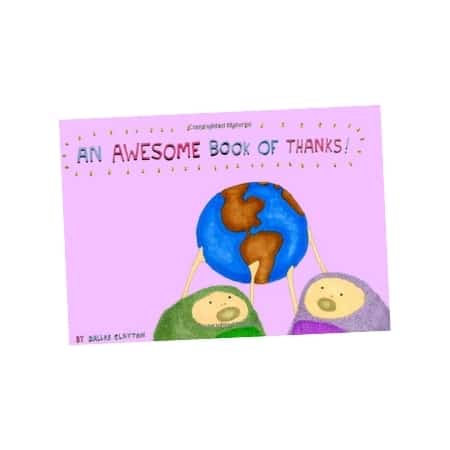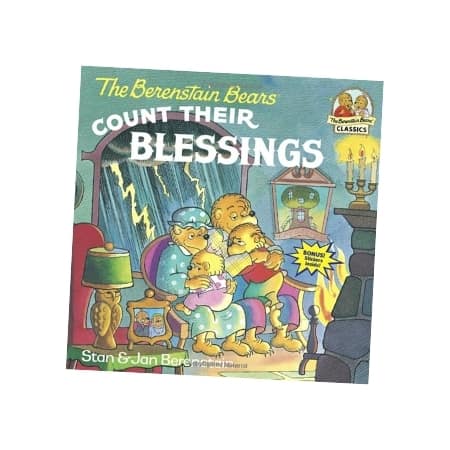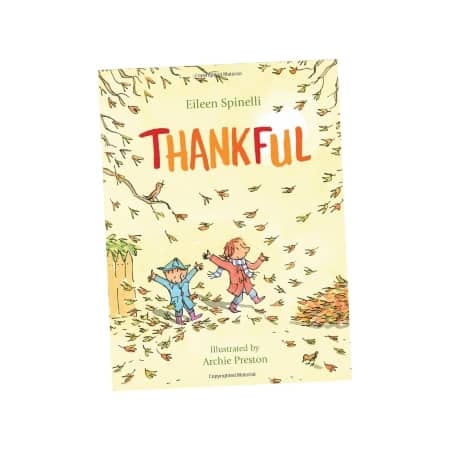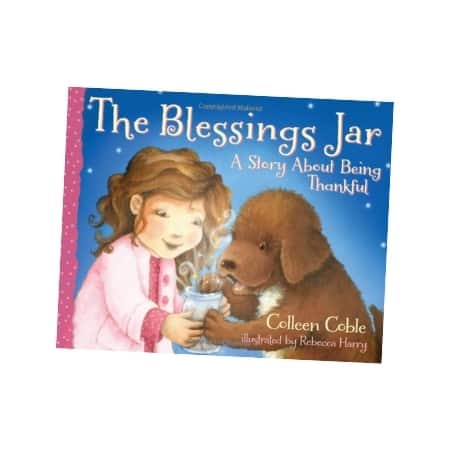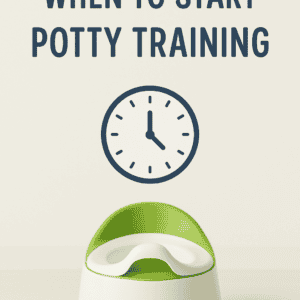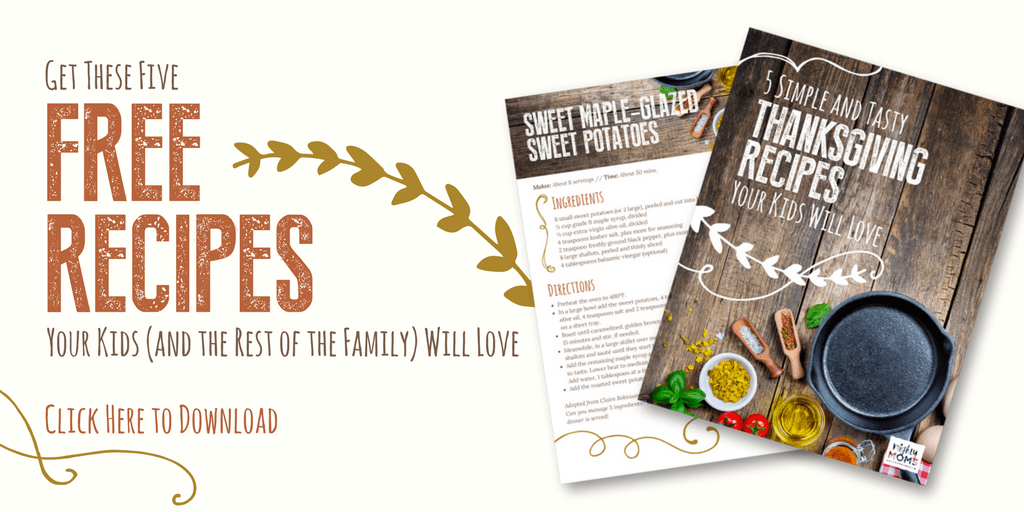In This Article...
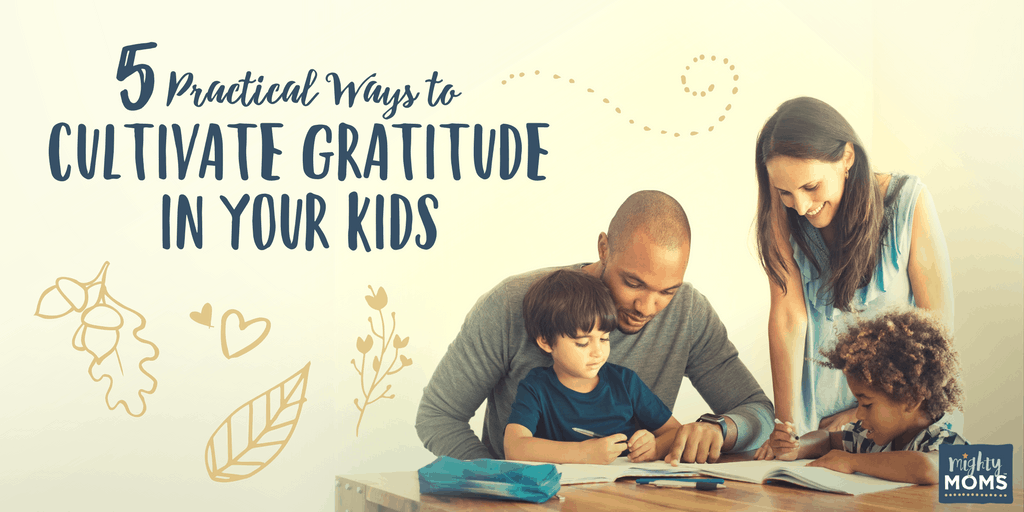
We all want grateful kids. It’s “how you get them” that’s the struggle.
Even though Thanksgiving is just around the corner, your preschooler probably has his sights set on Christmas and is already composing miles-long wish-lists of toys he just has to have.
Will he be more focused more on the things he WANTS? Or be grateful for the things he already HAS?
While gratitude isn’t a skill that can be taught – like riding a bike or learning how to read – it is something that can be encouraged and cultivated in your home.
Thanksgiving is the perfect opportunity to spend a little extra time focusing on its importance. Here are some free worksheets and ideas on how to cultivate an attitude of gratitude all season long.
The Far-Reaching Benefits of Gratitude
No one would disagree that gratitude is a beneficial quality. But did you know there are actual scientifically proven benefits to living a grateful life?
Recent studies (discussed in articles from Forbes and The Washington Post) have shown that people who regularly practice gratitude have:
- Improved sleep, both in duration and quality
- Fewer aches and pains
- Decreased blood pressure
- Reduced stress
- Better relationships with friends and family
- An increased sensitivity towards other people
- Approximately 25% increase in one’s happiness levels
There’s no denying it: Cultivating gratitude in your family is a worthwhile investment of your time!
If you’re interested in all the scientific findings and implications, pick up a copy of Thanks: How the New Science of Gratitude Can Make You Happier, which is written by one of the leading researchers in the field.
Cultivating Gratitude in Your Child’s Life
Now, I’d love to swoop in like the hero and tell you about the magic solution to teaching your child to be grateful, but, unfortunately, there isn’t one.
There is not one particular method to cultivate gratitude in your preschooler. It takes a combination of several elements, working together over a long period of time.
Picture a jigsaw puzzle: The finished picture of gratitude in your child’s life is composed of many different pieces of learned thankfulness that fit perfectly together.
So, let’s take a look at a few widely-suggested tips – and practical activities – for assembling a puzzle of gratitude in your own home.
Puzzle Piece #1:
Model Gratitude Yourself
So much of parenting starts with the parents.
If we want to raise grateful children, we must start by setting an example of gratitude ourselves.
Show your child what gratitude looks like and the effect it has on your life. Set a thankful tone in your home that will kickstart an avalanche of appreciation that flows over and through your entire family.
Modeling Gratitude in a Journal
One way to become a more grateful person is to take up the practice of a Gratitude Journal, which is simply a log of all the things for which you can be thankful. Build the discipline by taking a few minutes each day to note the good things that happened, the times you were happy, and some things for which you’re thankful.
Not sure where to start? Use this list of ideas and prompts!
Can you imagine how awesome it will be in 100 years for your descendents to discover and read all the little ways you found to be thankful in the midst of your day to day life? Talk about paying it forward… It may just be the inspiration they need to keep going in 2117!
Modeling Gratitude in Your Attitude
As you embark on your journey of cultivating gratitude, pick up a copy of One Thousand Gifts by Ann Voskamp which chronicles Ann’s own journey to pay more attention to the blessings in her life.
Watching how she kept a grateful attitude through the storms of her life will give you some solid real-life examples on how to do it in your own.
Modeling Gratitude with Your Kids
The best way to teach an abstract concept with your kids is to turn it into a game. (Seriously, if it’s a game, they’ll learn anything…)
Make sure you download this Gratitude Activity Printable for a fun twist on “I Spy!” to help you put this puzzle piece tip into practice at home with your kids!
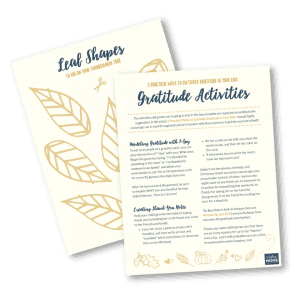
If you like the free download, why not subscribe to my weekly email and get a free copy of 101 Ways to Be an Awesome Mom?
Or, if you’re grateful, but not interested in subscribing, can you share this article with your social media pals? I’d be very grateful for the introduction! (See what I did there? *wink*)
Puzzle Piece #2:
Create a Habit of Saying Thank You
Here’s something you’re probably already doing.
In fact, you may even be doing this without realizing it.
When your toddler is learning to talk, start instilling in her a habit of saying please and thank you. It can be as simple as restating her sentence correctly.
Toddler: I want a snack, Mommy.
Parent: Can I have a snack, please, Mommy?
Even though he may not be “getting it” at 2-years-old, creating a habit of saying thank you begins a lifelong practice. It introduces the thankfulness category.
There’s another practical way you can help your children fall into this good habit! Even the youngest child can learn how to write thank-you notes! The Gratitude Activity Printable will walk you through how to make this act a simple 10-15 minute activity – one that will be cherished for years to come!
Puzzle Piece #3:
Name Things You Are Grateful For
Building off the first two puzzle pieces, help your child name the things for which he’s grateful, continuing to create a habit of noticing the good things already in our lives.
A simple way to encourage this is to create weekly or daily routines that involve reflecting on your day and practicing gratitude as a family.
- Make “highs and lows” part of your dinner time tradition. At the table, take turns sharing your “high” from the day and your “low” from the day. At our house we also include something you’re excited about.
- Before bedtime prayers, ask your child what he was thankful for that day and then you can thank God together.
- On the car ride to school, tell your child one reason you’re thankful for him.
- Help your child create a Gratitude Tree–included in the Gratitude Activity Printable–to serve as a reminder all month long of the good things you’ve been given.
Setting up routines like these will help your child to reflect on all the wonderful things they have and experience, and will encourage healthy communication in your family.
Puzzle Piece #4:
Read Books That Encourage Thankfulness
There’s nothing like a good book to start a conversation about gratitude with your preschooler.
In our home, this conversation always includes teaching our children WHO we are thanking. As a Christian, I believe that God is the giver of all good gifts, and He gave the best gift in His Son Jesus Christ. Because of that, when teaching my children about gratitude, I cannot separate it from teaching them about God.
I recognize that The Mighty Moms Club is made up of mamas from all walks of life and not all of you believe the things I do; so while I have several book recommendations that have a Christian influence, I tried to keep most of the suggestions neutral so all families could find them useful.
Here are a few books worth checking out:

Then, continue the conversation by referring back to the books throughout the week. When your toddler has a grumpy attitude, ask her if she remembers what helped cheer up Punky Grace in The Blessings Jar and try it together!
Puzzle Piece #5:
Turning the Focus to Others
Children naturally have a fairly narrow worldview. It’s very common for them, during this stage of brain development, to focus on all the things they don’t have, because they lack the frame of reference to tell them how fortunate they already are.
Helping your child realize that there are many people in the world who actually have very little can help get the focus off of himself and encourage him to be more thankful for what he currently has.
You can start exposing your child to different issues by carefully choosing books that widen his worldview. The team at Doing Good Together has compiled a list of children’s books that do just that. Make sure to ask your child (age-appropriate) questions about the stories to give him a safe place to process.
Another helpful book is Ronnie Wilson’s Gift by Francis Chan, a California pastor, which tells the story of Little Ronnie Wilson who learns about giving to others as a way of thanking Jesus.
Want to do more than just read a few books? The Gratitude Activity Printable once again comes to the rescue with the “Tearing into the Toy Box” activity to help practice “Others Awareness”. Download it for free using the button below.
Let’s Get Practical
We all know that trying to teach a preschooler anything is a lost cause if it doesn’t involve something practical.
And if it’s fun? Even better.
Keeping this in mind, we’ve compiled four super practical activities to do with your preschooler to emphasize the importance of gratitude in your family.
The Gratitude Activity Printable is completely free. Just download it below!

If you like the free download, why not subscribe to my weekly email and get a free copy of 101 Ways to Be an Awesome Mom?
Or, if you’re grateful, but not interested in subscribing, can you share this article with your social media pals? That works too!
From one working mother to another, thanks!
Putting it All Together:
Your Finished Puzzle of Gratitude
The holiday season is a perfect time to put some extra emphasis on gratitude in your home.
While your child might be solely focused on all the presents she hopes to receive, you can gently redirect her attention to all the things she already has.
- The family and friends you’re gathering with together.
- The good food she’s enjoying.
- The warm house she gets to sleep in.
Helping your preschooler remember all the blessings that already fill her life can help cultivate a grateful heart in your child that will have immeasurable benefits.
Aside from all the physical and psychological ones (increased happiness, better sleep and health), grateful children grow up to be grateful adults, and the world definitely needs those.
All the pieces of the gratitude puzzle work together to cultivate gratitude in your child (and yourself!), and I think the perfect illustration of that finished puzzle is this quote from Ann Voskamp: “When we give thanks, we gain joy.”
We Love Citations!
Thankfulness. FocusontheFamily.com
10 Ways to Raise a Grateful Kid. PBS.org
7 Scientifically Proven Benefits of Gratitude that will Motivate You to Give Thanks Year-Round. Forbes.com
Teaching Kids to be Grateful May Have Long-Term Benefits Even Though It’s Not Easy. WashingtonPost.com
